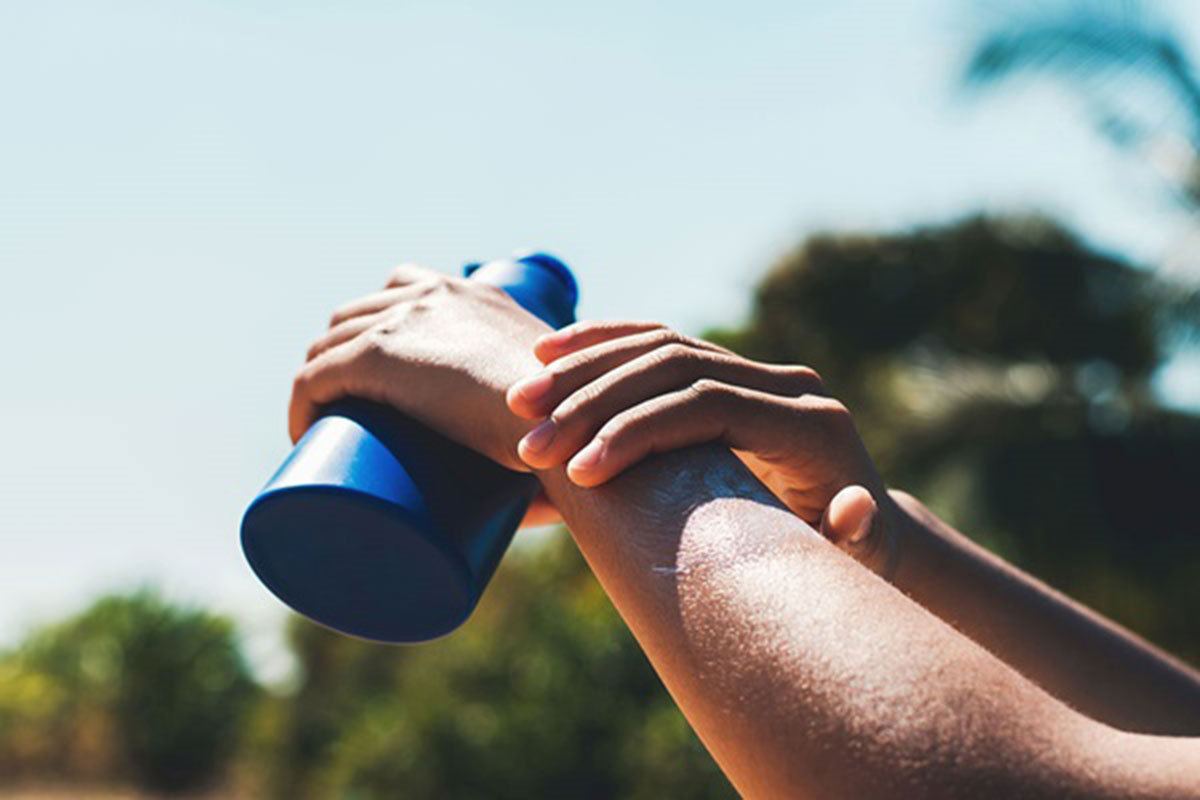-
Services
Featured Specialties
-
Locations
Location Type
-
Patients & Visitors
Published May 13, 2022

Proper SPF coverage can help protect against skin aging and skin cancer. New trends in skincare can make it hard to pick out the right sunscreen.
“I’m an advocate of any sunscreen people will wear,” said Kathleen Cook Suozzi, MD, a Yale Medicine dermatologic surgeon.
She recommends picking a broad-spectrum formula that protect against UVA and UVB rays. It should have an SPF of 30 or higher and most importantly, pick one you will put on every day, even in the winter.

“While intense intermittent exposure is the most potent driver of skin cancer, particularly basal cell carcinoma, cumulative sun exposure is an important driver as well,” Dr. Suozzi said.
She helped demystify some SPF trends. Learn more about her sunscreen hits and misses.
Mineral sunscreens, which contain ingredients like zinc and titanium, are physical blockers. They sit on top of the skin and reflect off UV rays. Chemical sunscreens contain ingredients like avobenzone and oxybenzone. They absorb UV rays and convert them into heat.
Dr. Suozzi recommends mineral-based formulas for several reasons. They tend to have better protection against both UVA and UVB rays, they are less likely to cause allergic reactions or irritations, and there is some concern that chemical formulas can cause coral reef bleaching.
These sunscreen powders are usually mineral blockers and can be great for re-applying your SPF. In the morning, you will want to apply your usual sunscreen for the day. Midday, if you are heading outside, you can use the powder to touch up. However, they should not be used at the beach or as your primary source of SPF coverage.
These are relatively new and they have become popular in the past two to three years. Since traditional sunscreen can get greasy in your part, these can be a great way to protect yourself, especially since Dr. Suozzi said she treats a lot of sun cancer in the scalp.
“The sunscreen ingredients are the same. It’s just the vehicle that they’re being delivered in and usually that’s a spray that’s an alcohol base so it’s not going to leave a greasy film on the hair,” Dr. Suozzi said.
These sprays are also helpful for kids who have sensitive scalps prone to sunburns.
A lot of the hype started with the popularity of European brands. The first one that made a big impact contained the chemical Mexoryl, or ecamsule. The appeal behind this ingredient is that it has excellent UVA coverage and many chemical sunscreens do not have great UVA coverage.
This ingredient was not available in the U.S. but eventually the FDA made an exception for it so now you can get it. There are other UVA blocking compounds available in Europe that we still do not have in the U.S.
However, when it comes to physical sunscreens, the U.S. has the same options. Since Dr. Suozzi recommends physical blockers anyway, she does not see the need to order a sunscreen from overseas.
There is no such thing as “edible sunscreen.” What does exist are supplements that have antioxidants, which can help mitigate the effects of the sun, once UV rays have already penetrated the skin. These supplements have not proven to reduce the risks associated with skin cancer.
Just like the sunscreen powders, these sticks are good for reapplication. They are great for your kids at the beach after you have already slathered them down with a good sunscreen. These sticks are not great at covering every inch of your face, so be sure you are protected with a good base first.
As a skin cancer surgeon, Dr. Suozzi says she operates on many locations, not only where the sun hits. To protect yourself from skin cancer, apply sunscreen everywhere! This includes your neck, chest and nose.
In general, no. That is because people do not apply makeup like sunscreen. You probably are ignoring your ears or the back of your neck for example. If you want to add your sunscreen to a product, add it to your moisturizer, since that is something you will likely apply everywhere. If you pick makeup with an SPF, look at the range. Some makeup has SPF with 30 or above. Many times, they are in the 15 range so it won’t be protective enough.